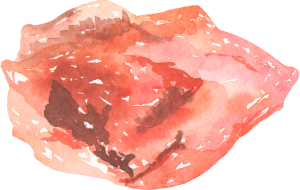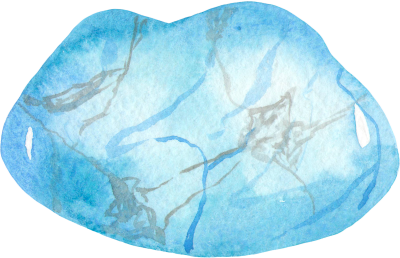Turquoise, Blue Zircon & Tanzanite
 Blue Zircon
Blue Zircon Turquoise
Turquoise
A Zircon lover or not – Here are some interesting facts that you need to know about Zircon
Since World War I the most commonly seen variety of zircon, the blue, has appeared in Jewellery. Known for its brilliance and flashy multicolour light otherwise called fire; Zircon is the birthstone for all those born in December. If one discerns close enough, it is seen that the properties of Zircon are almost close enough to that of Diamonds. This led to centuries of confusion between the gems.
Zircon comes in an array of beautiful colours. This stone has been marked as the favourite of many informed consumers and gem collectors due to its mesmerizing colours. The stone makes its appearance in a varied palette of yellow, green, red, reddish brown and blue hues.
In history, many people had heard of this charming gem but had never seen it. This was mainly due to the wide range of confusion between Zircon and another eminent stone Diamond. Since Zircon is double refractive
In the middle ages, this stone was verbalized to induce sleep, promote riches and drive away all spirits that were evil.
Many scholars think the stone’s name comes from the Arabic word zarkun, meaning “cinnabar” or “vermilion.” Others believe the stone gets its name from the Persian word zargun, or “gold colored.” Considering zircon’s color range, either of the derivations seems compatible.
Zircon has been broadly described as zirconium silicate containing trace amounts of the radioactive minerals hafnium, uranium and thorium. The highly dispersive and colorless stone are often used as Diamond substitutes.
The stone is usually heat treated. This treatment has two effects on the stone which are
1. Altering colour to the colourless stone
2. The crystal lattice of metamict zircons is restored to high type zircon
Clarity – These stones are often eye clean. Zircons with noticeable inclusions are often valued less.
Cut – Zircon is often cut in rounds and ovals simply because the shape maximises the brilliance of the stone.
Carat Weight - Zircon that are large in size have a high chance of insufficiency in quality.
Blue zircon was a favorite among the public in Victorian times, when fine gems were often featured in English estate jewelry dating from the 1880s.
Gemologist George Kunz—Tiffany’s famed gem buyer—was a notable zircon advocate. He then proposed the name “starlite” that promoted the gem’s fiery nature. However,the name never caught on
With substantial healing properties like aggrandizing positive Aura, healing headaches and inducing sleep, this stone is one such rare and sophisticated gem stone. Make the right choice of gifting your loved one with this rare stone and express your deep feelings for them. Get in touch with us and we can suggest the best Zircon product for you according to your requirements.

Turquoise. – Known for its History & Soul Satisfying Color , Texture and Matrix.
History of Turquoise: Turquoise is one of the world’s most ancient gem. It’s been adorned by Ancient Egypt & Chinese artisans for more than 3000 years. It is the National gem of Tibet and has been considered a stone that guarantees good health, good fortune and protection from evil
Turquoise derives its name from French expression Pierre torques, or “Turkish stone”. This name originated in the thirteen century. It reflects the fact that the material probably first arrived in Europe from the Turkish sources. It was also a medium of ceremonial exchange for the native American tribes.
Turquoise: Turquoise is formed in arid regions that contain copper-rich groundwater, such as the southwestern US (Nevada, Arizona, Mexico, California, Sinai Peninsula) are the largest producer of Turquoise, while China’s Hubei Province is the major source of its top colour.
Turquoise is plentiful and available in a wide range of sizes. Beads, Cabochons, carvings and Inlays are tall forms of Turquoise’s shapes.
The most prized turquoise is an even, intense, medium blue. Some designers also prefer Greenish Blue & seek for avocado & lime green turquoise as well.
Some of the common terms you’ll hear are Persian blue for mined in Iran. There is a high-value demand on other shades of blue
Turquoise with splotches of white or green in a bluestone will make it less valuable than one with uniform blue colour.
The fine texture is attractive & gets waxy lustre once it is polished.
As Turquoise produces limonite or sandstone, it creates splotches or veins which in trade terms are tan markings or sandstone.
Presence of Matrix lowers the value of the stone, but on the other hand, some buyers demand stone with the matrix as it affects its attractiveness and balances the Fashion trend. Top-quality turquoise stone with no matrix at all commands the highest price. Wherein, attractive spider web matrix ranks second in value.
In ancient times, people used to believe that turquoise has a supernatural power that its tendency to discolour might represent the stone’s sympathetic response to its wearer’s mood.
Well, the scientific reason is the gem’s degree of porosity influences the change in its colour over time.
The more porous the turquoise the more it absorbs the foreign substance that can damage the colour.
But not every natural turquoise will discolour. Nowadays, most of the Turquoise undergo treatments like Wax treatment, Oil or polymer plastic impregnated, Dyed treatment. The most famous Treatment was introduced in 1980 known as the Zachery method. After which more than 10 million carats of turquoise have been treated to improve its colour, less porosity and ability to take a better polish.
Turquoise treatment started showing a negative impact on the Turquoise market and it became slow in terms of sales.
Turquoise can be set in silver, gold & brass too. The turquoise market has remained unchanged for several years. Native American people such as Pueblo, Hopi, Zuni and Navajo often handcrafted Turquoise Jewelry.
Bead strand, Squash blossom necklaces, Crescent-shaped silver and turquoise pendant Conch belts, Sunburst silver bracelets were typical tradition styles of Native Americans. Back then people were only trusting native Americans designers for using natural and non treated turquoise for the purpose of trade.
In fact, turquoise was the first gemstone to suffer from publicity about treatment. The local market for turquoise has two categories: first – Inexpensive, mass-produced sterling silver Jewelry. These pieces imitate native American style motifs often dyed, cast and are not even originated from the American southwest. Instead, these less expensive goods come from Mexico or elsewhere in the US. They are also offered in Tourist spots.
The second type of market is – American Southwest higher quality, Hand fabricated feature a traditional style and motifs using gold or platinum settings and top quality Turquoise. The supply of Turquoise is stable & Plentiful with reasonable price. Commercial quality ranges from $ 7 – to $17. High-end cabochons cost approx from $100.00.
It is believed that Turquoise also has healing properties. It was believed in ancient time that Turquoise could cure breathing problems, cure infections, improve eyesight issues and also fix depression and anxiety issues.
Turquoise makes good gifts commemorating an engagement or anniversary. Turquoise is usually gifted during the 5th or 11th wedding anniversary.
Turquoise being is known for its beauty and colour. You can now gift your loved one celebrating his or her 5th or 11th anniversary with a beautiful turquoise ring. Get in touch with Jinas’s Jewels to orders your turquoise jewellery today.